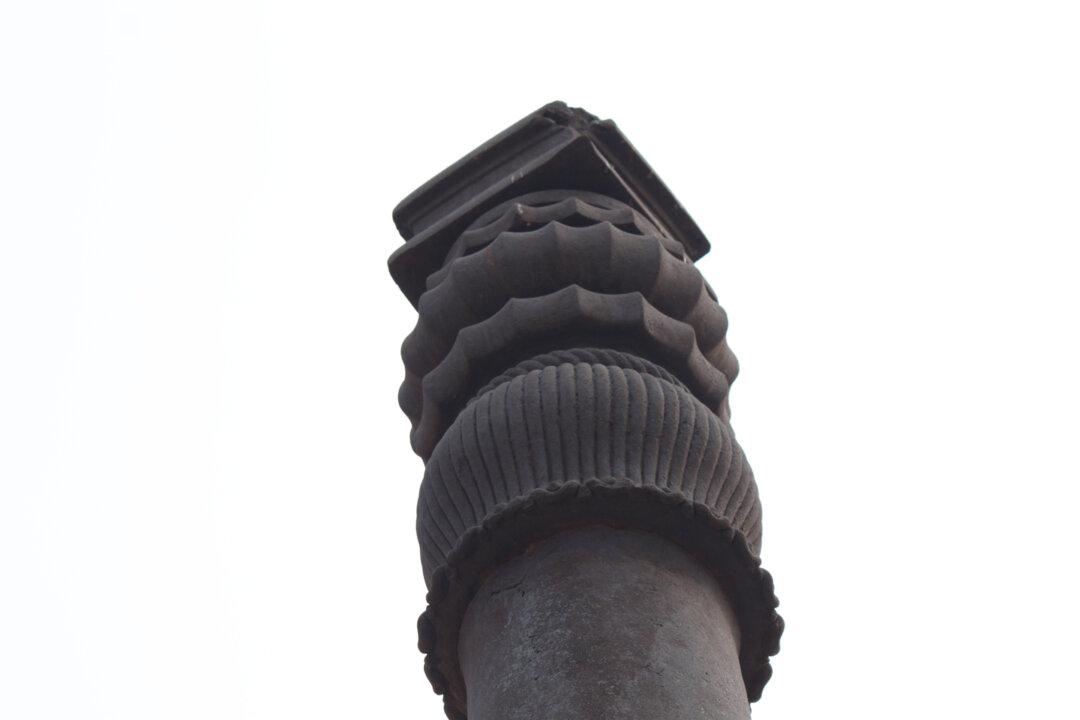What is amazing about the Iron Pillar of Delhi is that, in spite of being at least 1,500 years old and possibly much older, it is so impenetrable to corrosion that even modern technology fails to match it.
The 24-foot pillar is 99.72 percent iron, according to professor A.P. Gupta, head of the Department of Applied Sciences and Humanities at the Institute of Technology and Management in India.
In modern times, wrought iron has been made with a purity of about 99–99.8 percent, but it contains manganese and sulfur, two ingredients absent in the pillar. The pillar was also coated in a protective oxide film. It is unlike anything produced today.
It has survived more than 1,000 monsoons without rusting. An inscription on it dates to about A.D. 400, but it was common at the time to re-erect old pillars with new inscriptions declaring victory in battle or some other triumph.
John Rowlett wrote in “A Study of the Craftsmen of Ancient and Medieval Civilizations to Show the Influence of their Training on our Present Day Method of Trade Education” that the pillar was made “400 years before the largest known foundry of the world could have produced it.”
He also noted that the Sultanganj Buddha, which was cast of pure copper and weighs more than a ton, is some 1,500 years old and “no scientific explanation has yet been made in regard to how it was built at such an early date.”
A pamphlet for the statue at the Birmingham Museum and Art Gallery where the Buddha statue is displayed reads: “For it to have survived virtually intact for around 1,500 years makes the Sultanganj Buddha unique in the world.”

The Sultanganj Buddha. (Wikimedia Commons)





